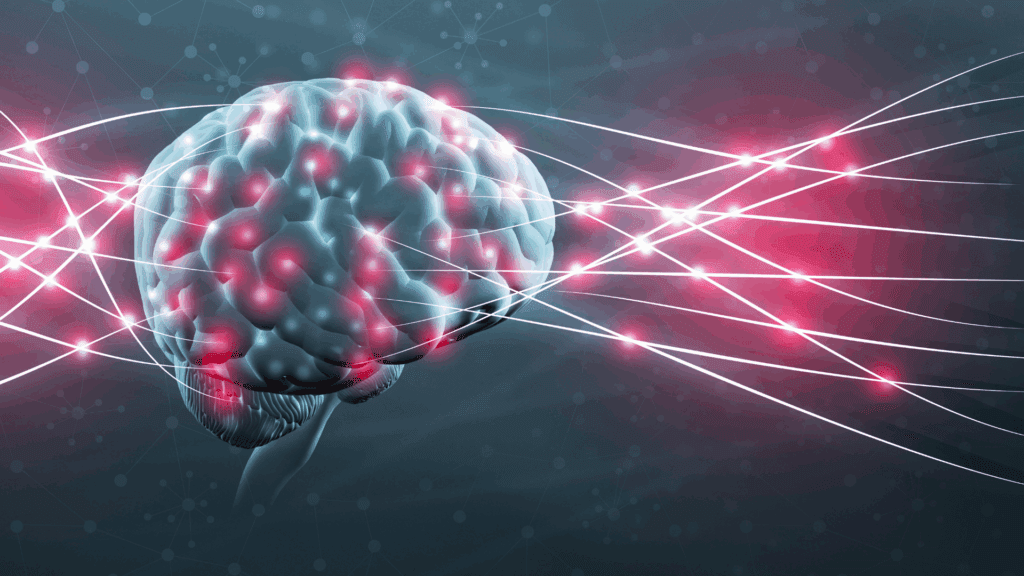Sexual addiction is a term often used interchangeably with compulsive sexual behavior disorder, but understanding the neuroscience of sex addiction reveals unique brain-based mechanisms behind these compulsions. Sexuality is one of the most potent human drives, woven into our biology and culture for millennia. But what happens when this natural urge becomes compulsive—when sexual thoughts and behaviors begin to hijack daily life, relationships, and even self-worth?
The neuroscience of sex addiction reveals a story as complex as it is urgent, blending ancient evolutionary wiring with the modern world’s relentless stimulation. In this comprehensive guide, we’ll explore the brain science behind sex addiction, why it develops, how it’s sustained, and what it means for those who struggle with it, including a real-life case study from my own neuropsychological coaching practice.
Understanding the Neuroscience of Sex Addiction: What Is It?
If you’ve ever felt stuck in a loop you can’t break—knowing you should stop, but feeling powerless to do so—you already have a sense of what sex addiction can feel like. The neuroscience of sex addiction helps us see that this isn’t just about willpower or desire; it’s about persistent, uncontrollable sexual thoughts, urges, or behaviors that cause real distress or disrupt daily life. Unlike healthy sexual desire, sex addiction is marked by a loss of control, where someone keeps returning to the same behaviors despite adverse consequences, much like what happens with substance addictions.
Many people struggling with sex addiction describe a relentless cycle: it starts with an intense craving, followed by a ritualized search or pursuit, a fleeting moment of satisfaction, and then an overwhelming crash of guilt, shame, or emptiness. It’s a cycle that can quietly take over, impacting work, relationships, and self-worth. The neuroscience of sex addiction reveals that this pattern isn’t a moral failing; it’s a brain-based process, with powerful reward circuits and emotional triggers working beneath the surface.
By exploring the neuroscience of sex addiction, we gain a clearer understanding of why breaking free can feel so difficult—and why compassion, not judgment, is the first step toward real change.

The Brain’s Reward System: Dopamine, Desire, and the Cycle of Compulsion
At the heart of the neuroscience of sex addiction is the brain’s reward system—a complex network of structures designed to reinforce behaviors that promote survival and reproduction. The key players in this process are the ventral tegmental area (VTA), the nucleus accumbens (often referred to as the “pleasure center”), the amygdala, and the prefrontal cortex.
When we engage in pleasurable activities—such as eating, socializing, or having sex—the brain releases dopamine, a neurotransmitter that signals reward and motivation. Dopamine surges make us feel good and motivate us to repeat the behavior. Taking a neurological perspective of sexual behavior allows us to see how specific brain circuits and neurochemicals contribute to both healthy desire and the development of sex addiction. For most people, this system is self-regulating. But in sex addiction, this circuitry becomes hijacked.
The neuroscience of sex addiction reveals that repeated exposure to intense sexual stimuli can supercharge the reward system, flooding the brain with dopamine far beyond what it was designed to handle. Over time, the brain starts to crave not just pleasure, but the anticipation and ritual leading up to it, making the chase itself as addictive as the reward.
The neuroscience of sex addiction shows that these powerful neural loops can override logic and self-control, driving people to seek out riskier, more novel experiences to feel “normal” again. Recent studies using incentive delay reaction times have shown that individuals with sex addiction exhibit heightened anticipation and reward responses in the brain, further supporting the neuroscience of sex addiction model.
What’s truly provocative is that the neuroscience of sex addiction demonstrates how the brain’s ancient survival mechanisms can be twisted by modern life, turning a natural drive into an all-consuming compulsion. This isn’t just about pleasure gone awry—it’s about the brain’s deepest wiring being rewired, trapping people in a cycle that feels impossible to escape.
How Sex Addiction Hijacks the Brain
For individuals with sex addiction, sexual stimuli (fantasies, pornography, risky encounters) trigger abnormally high dopamine release. Over time, the brain adapts by reducing its sensitivity to dopamine. This means it takes more stimulation to achieve the same sense of pleasure—a phenomenon known as tolerance. As a result, the person seeks out more frequent, intense, or risky sexual experiences to chase the original high.
Meanwhile, the prefrontal cortex—the brain’s “CEO,” responsible for impulse control and decision-making—becomes less active. This makes it harder to resist urges, even when the consequences are clear. The amygdala, which processes emotions and stores memories of pleasure and pain, links sexual activity with powerful emotional rewards, fueling the cycle.
Neuroplasticity: How the Brain Learns Addiction
The brain’s remarkable ability to adapt—neuroplasticity—is a double-edged sword in the neuroscience of sex addiction. Repeated exposure to sexual stimuli and compulsive behaviors “rewires” the brain, strengthening neural pathways that associate sex with relief, escape, or reward.
Over time, these pathways become automatic. The brain learns to crave the altered state produced by sexual activity, and everyday pleasures lose their appeal. This is why people with sex addiction often describe feeling numb or empty when not engaged in their compulsive behaviors. The brain’s reward system has been recalibrated, prioritizing sexual stimulation above all else.

Evolutionary Roots: Why the Brain Is Vulnerable
To truly grasp why sex addiction exerts such a powerful hold, we must journey back to our evolutionary roots. Human beings evolved in environments where opportunities for sexual encounters were scarce and reproduction was critical for the survival of the species. This scarcity shaped the brain’s reward system to prioritize sexual behavior as a vital drive, making it intensely motivating to the point that it could override other essential needs when necessary.
Fast-forward to the present day, and the landscape has undergone a dramatic shift. Sexual stimuli are now omnipresent, flooding our senses through the internet, social media, and a culture saturated with constant novelty and arousal. The brain, however, remains wired for a world of scarcity, not abundance. This evolutionary mismatch creates a perfect storm, overwhelming the brain’s reward circuits and contributing significantly to the neuroscience of sex addiction.
The neuroscience of love and sex demonstrates that the same brain pathways involved in bonding and intimacy can, under certain conditions, be co-opted by compulsive sexual behavior. Understanding this evolutionary backdrop is crucial in the neuroscience of sex addiction, as it highlights why our ancient brain wiring is particularly vulnerable to the relentless flood of modern sexual stimuli, setting the stage for compulsive behaviors to take hold.
Genetics, Hormones, and Individual Vulnerability
Not everyone exposed to sexual stimuli develops sex addiction. Genetics play a role—some people are naturally more impulsive, sensation-seeking, or prone to emotional dysregulation. High levels of sex hormones like testosterone or estrogen can also increase sexual drive, making some individuals more susceptible.
Childhood experiences, trauma, and attachment patterns further shape the brain’s development. People who experienced neglect, inconsistent caregiving, or abuse may turn to sexual behavior as a way to self-soothe or escape emotional pain. Over time, the brain learns to associate sex with relief from distress, further entrenching the cycle.

The Emotional Rollercoaster: Shame, Guilt, and the Aftermath
The neuroscience of sex addiction isn’t just about pleasure—it’s also about pain, and often, that pain runs deep. After the initial rush of dopamine fades, many people are left with a heavy emotional crash: sadness, guilt, shame, or even self-loathing. These feelings aren’t simply fleeting thoughts or moods; the neuroscience of sex addiction shows they are rooted in the brain’s chemistry and wiring, making them feel inescapable and overwhelming.
The amygdala, the brain’s emotional memory center, becomes increasingly sensitized to both the highs and the lows of sexual behavior. As a result, each episode of compulsive behavior is etched into the brain, reinforcing not just the pleasure but also the regret and emotional fallout that follows. For some, this creates a relentless, vicious cycle: negative emotions trigger cravings for relief, which lead to compulsive sexual behavior, which in turn leads to even more intense feelings of guilt and shame.
The neuroscience of sex addiction reveals that this cycle can become so deeply embedded in the brain that it repeats for years, making it difficult to break free without understanding and addressing both the neurobiological and emotional roots.
Unmet Emotional Needs and the Neuroscience of Sex Addiction
Understanding the neuroscience of sex addiction reveals a powerful truth: compulsive sexual behaviors are rarely just about physical urges. More often, they are deeply rooted in unmet emotional needs. When individuals experience chronic loneliness, rejection, or a lack of nurturing relationships, the brain’s reward and attachment systems become vulnerable to seeking comfort through alternative means. The neuroscience of sex addiction shows how the brain’s circuits for pleasure, connection, and relief can become entangled, leading people to use sexual behavior as a substitute for emotional fulfillment.
This insight from the neuroscience of sex addiction is crucial for both individuals and professionals. It highlights that addressing compulsive sexual behavior requires more than willpower or surface-level strategies. Actual progress comes from identifying and healing the underlying emotional wounds that drive the compulsion. By bringing awareness to these unmet needs, individuals can begin to rewire their brains for healthier, more authentic connections, transforming the cycle of addiction into a path toward genuine healing and self-acceptance.
Sociocultural Factors: How Society Shapes Sex Addiction
Sex addiction does not develop in a vacuum. Cultural norms, media, and technology all play a significant role in shaping how individuals experience and express their sexuality. In societies where sexuality is taboo, stigmatized, or shamed, individuals struggling with compulsive sexual behaviors often face intense guilt, secrecy, and isolation. These feelings can exacerbate the cycle of addiction, as shame and silence prevent open discussion and access to support.
Conversely, in hypersexualized cultures where sexual imagery and content are pervasive and normalized, compulsive sexual behaviors can be overlooked or even inadvertently encouraged. The constant bombardment of sexual stimuli through advertising, entertainment, and social media blurs the line between healthy sexual expression and addiction, making it harder for individuals and society to recognize when sex addiction becomes a problem.
The rise of digital technology has dramatically transformed the landscape of sex addiction. Online pornography, dating apps, and social media platforms provide instant, anonymous, and limitless access to sexual stimulation. The brain’s reward system, which evolved to respond to rare and meaningful rewards, is now overwhelmed by a relentless stream of novelty and arousal. This constant stimulation accelerates the neuroplastic changes that underlie addiction, reinforcing compulsive behaviors and making recovery more challenging.
Understanding the sociocultural context is essential in the neuroscience of sex addiction, as it highlights how external influences interact with brain mechanisms to shape compulsive sexual behavior. To fully grasp the neuroscience of sex addiction, it is crucial to acknowledge how societal pressures, digital environments, and cultural attitudes can amplify vulnerability and impact the path to recovery.

Client’s Story: Breaking the Cycle
To bring the neuroscience of sex addiction to life, let me share the story of a client I’ll call “Michael.” Michael was a successful executive in his early forties, married with children. On the surface, he had it all. But privately, he struggled with overwhelming sexual urges that he couldn’t control. What began as occasional use of online pornography escalated into hours of daily viewing, secretive encounters, and risky behavior that put his marriage and career at risk.
Michael described his experience as being “hijacked” by his own brain. He knew the consequences—he felt the guilt, the shame, the fear of being discovered—but in the moment, the craving was overpowering. He spoke of a physical sensation —a “buzzing” in his head, a tightening in his chest, and a sense of tunnel vision that blocked out everything else.
Through our work together, we explored the roots of his compulsions. Michael’s childhood had been marked by emotional neglect and unpredictability. He learned early on to seek comfort in fantasy and escape. As an adult, the stresses of work and family life triggered the same old patterns—his brain, conditioned by years of repetition, reached for the quickest source of relief.
By understanding the neuroscience of his addiction, Michael began to see his behavior not as a moral failing, but as a learned response—one that his brain had been reinforcing for years. This shift in perspective was decisive. He started to recognize the early warning signs—stress, loneliness, boredom—that preceded his cravings. Over time, he learned to intervene before the cycle took over, gradually rewiring his brain’s response to stress and reward.
Michael’s story is not unique. It illustrates how the neuroscience of sex addiction can empower individuals to break free, not through shame or willpower alone, but by understanding and working with the brain’s natural capacity for change.
The Role of Neurochemistry: More Than Just Dopamine
While dopamine is the star player in the neuroscience of sex addiction, other neurochemicals are involved. Serotonin, which regulates mood and impulse control, is often depleted in people with addictions, making them more prone to compulsive behavior. Oxytocin, the “bonding hormone,” is released during sexual activity and can create powerful associations between sex and emotional comfort.
Over time, the brain’s natural balance of these chemicals becomes disrupted. The result is a state of chronic craving, irritability, and emotional volatility. Understanding this neurochemical soup is essential for anyone seeking to heal from sex addiction.
Psychological and Relational Dynamics
Sex addiction is not just a brain disease—it’s a deeply psychological and relational issue. Many people use sex as a way to avoid difficult emotions, numb pain, or fill a sense of emptiness. The neuroscience of sex addiction shows how these psychological patterns become hardwired in the brain, making them difficult to change without conscious effort.
Relationships often suffer. Partners may feel betrayed, confused, or inadequate. Trust is eroded, and intimacy becomes fraught with secrecy and shame. For the person struggling with addiction, the inability to form lasting, meaningful connections can reinforce feelings of isolation and despair.

The Social Brain: Attachment, Connection, and Loneliness
Humans are fundamentally wired for connection. The same intricate brain circuits that fuel sexual desire are also deeply involved in our need for attachment, intimacy, and belonging. When these core needs go unmet—whether because of early trauma, emotional neglect, or chronic social isolation—the brain instinctively seeks substitutes to soothe the ache. In the absence of a genuine connection, compulsive sexual behavior can emerge as a way to fill the void temporarily. Ironically, while these behaviors may offer fleeting relief, they often intensify feelings of loneliness and disconnection over time.
This is why the neuroscience of sex addiction is so much more than an exploration of behavior in isolation. The neuroscience of sex addiction reveals that true healing requires us to look beneath the surface, to understand the powerful emotional and social forces that drive compulsive patterns. Only by addressing these underlying needs for connection and belonging can we begin to break the cycle and foster lasting, meaningful change.
The Power—and Peril—of Neuroplasticity
One of the most hopeful discoveries in neuroscience is that the brain is capable of change. Neuroplasticity means that the same pathways that sustain addiction can be rewired. With conscious effort, new habits, and supportive environments, the brain can learn to find pleasure, comfort, and meaning in healthier ways.
But neuroplasticity cuts both ways. The longer sex addiction persists, the more entrenched the neural pathways become. This is why early intervention is so necessary—and why understanding the neuroscience of sex addiction can be a catalyst for change.
The Future of Sex Addiction Science
If you’ve ever felt stuck in a loop you can’t break—knowing you should stop, but feeling powerless to do so—you already have a sense of what sex addiction can feel like. The neuroscience of sex addiction helps us see that this isn’t just about willpower or desire; it’s about persistent, uncontrollable sexual thoughts, urges, or behaviors that cause real distress or disrupt daily life.
Unlike healthy sexual desire, sex addiction is marked by a loss of control, where someone keeps returning to the same behaviors despite negative consequences, much like what happens with substance addictions. The struggle can feel invisible to others, yet all-consuming for those caught in its grip. It’s not uncommon for people to hide their pain, fearing judgment or misunderstanding from those around them.
Many people struggling with sex addiction describe a relentless cycle: it starts with an intense craving, followed by a ritualized search or pursuit, a fleeting moment of satisfaction, and then an overwhelming crash—guilt, shame, or emptiness. It’s a cycle that can quietly take over, impacting work, relationships, and self-worth. The neuroscience of sex addiction reveals that this pattern isn’t a moral failing; it’s a brain-based process, with powerful reward circuits and emotional triggers working beneath the surface. By exploring the neuroscience of sex addiction, we gain a clearer understanding of why breaking free can feel so difficult—and why compassion, not judgment, is the first step toward real change.

Reclaiming Control Through Neuroscience
The neuroscience of sex addiction offers a roadmap for understanding, compassion, and change. By seeing sex addiction as a brain-based, learned pattern—shaped by evolution, environment, and experience—we can replace shame with insight and helplessness with hope.
If you or someone you care about is struggling with compulsive sexual behavior, know that you are not alone and that change is possible. The brain is not fixed; it is constantly adapting. With the right knowledge, support, and commitment, it is possible to break free from the cycle of addiction and reclaim a life of meaning, connection, and self-control.
Sex addiction is not a moral failing or a lack of willpower. It is a complex interplay of brain circuits, neurochemistry, evolutionary drives, and social context. By understanding the neuroscience of sex addiction, we can take the first step toward healing, not just for ourselves, but for our relationships and our communities.
Understanding the neural drivers of compulsive behavior is essential to breaking free from the patterns that keep you stuck. By working with your brain’s dopamine system, not against it, lasting change becomes possible. NeuroDrive: Personalized Dopamine Optimization offers a customized, science-backed approach to help you restore control, rebuild motivation, and rewire the behaviors that no longer serve you.
#Neuroscience #SexAddiction #BrainHealth #AddictionScience #PersonalDevelopment #Neuropsychology #CaseStudy



